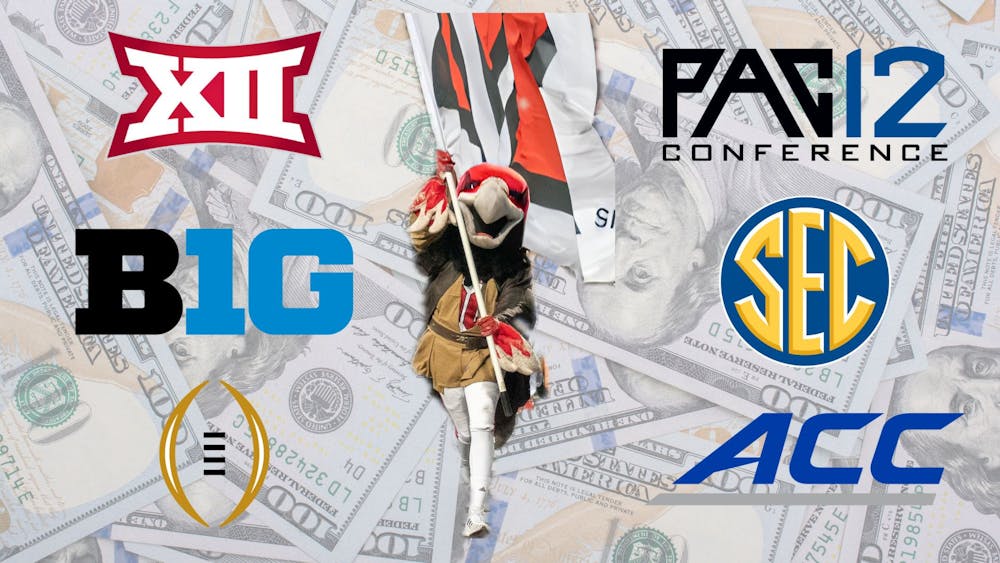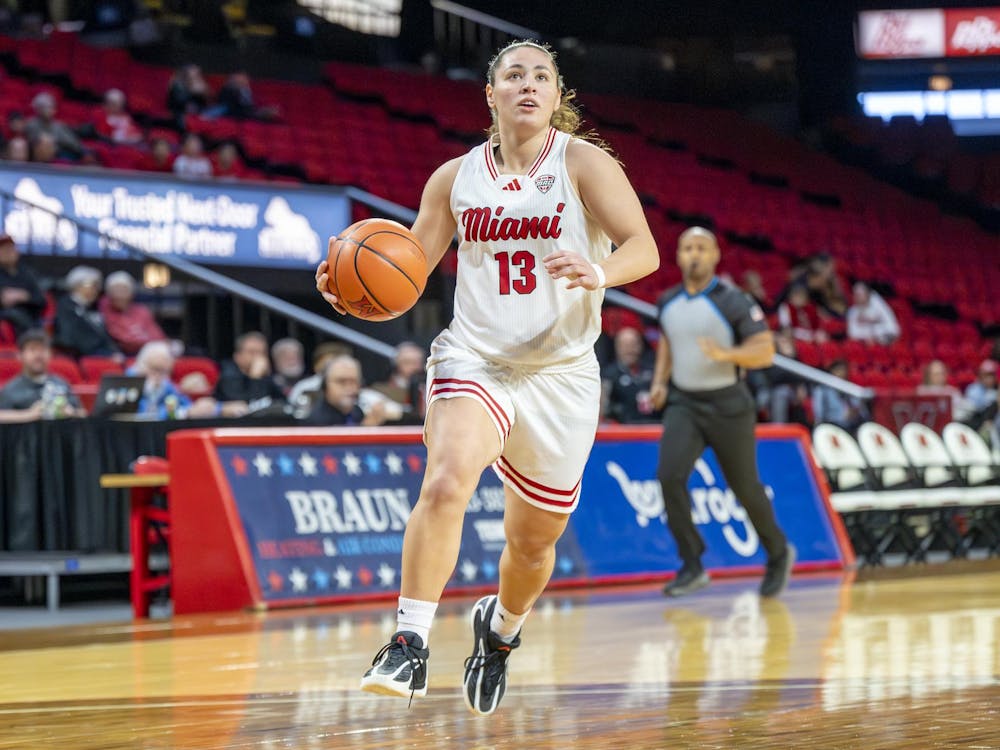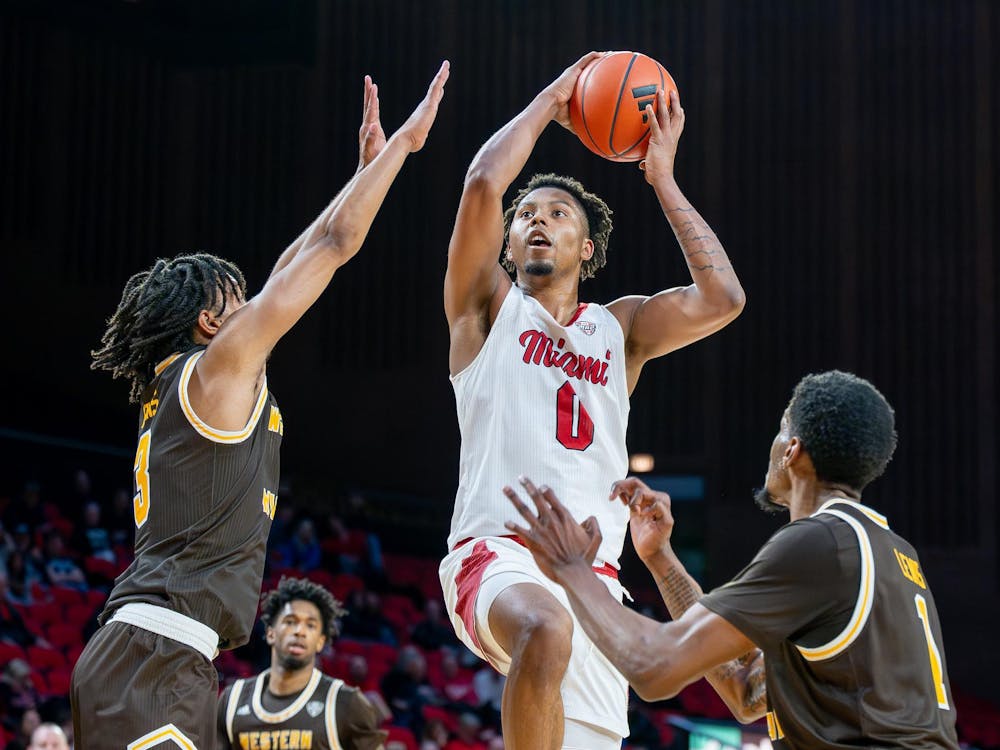As the football season for the Miami University RedHawks winds down, the team is preparing for its first Mid-American Conference (MAC) Championship appearance since 2019. This year, for just the third time since the Jimmy Carter administration, Miami finished the regular season with 10 wins.
Such a great season begs an interesting — albeit unrealistic — question: What would it take for Miami to play at the Power 5 level and compete?
In college football, the biggest five athletic conferences (soon to be four with the dissolution of the PAC-12) are colloquially known as the Power 5, with the remaining 5 athletic conferences (the MAC included) known as the Group of 5 schools. Schools like the University of Cincinnati (UC) and Brigham Young University have jumped to the Power 5 over the last few years, and Southern Methodist University is set to do so in 2024.
Here are a few big things that Miami would need to consistently compete with teams in a Power 5 conference.
Staff:
The lucrative nature of being a Power 5 football head coach makes sense considering the tens of millions of dollars in revenue that football brings in for many Power 5 universities.
Enjoy what you're reading?
Signup for our newsletter
Still, the $75 million buyout that Texas A&M University will pay their recently fired coach Jimbo Fisher in installments through 2031 is something that even the biggest programs in the country would have a hard time stomaching.
According to USA Today, Miami’s head football coach Chuck Martin currently receives an annual salary of $575,300 which is the third-lowest in the MAC and in the bottom five head coach salaries in all of college football.
Miami would need to pay close to $2.7 million per year to offer a competitive salary as a Power 5 school, the salary of the current lowest-paid Power 5 head football coach.Scott Satterfield, UC’s head football coach, brings in just over $3.5 million per year.
Additionally, a substantial increase would need to be made in salaries for non-revenue sports such as golf, swimming and diving, cross country and track and field just to remain competitive.
Finally, Miami would need a major increase in assistant coaching pay. Miami spends less than $3 million total on assistant coaching salaries. None of that includes things like additional support staff, nutritionists and recruiting staffers that would be needed to compete in a new, bigger arena of Power 5 football and sports in general.
Facilities:
Miami has poured considerable money into its facilities over the past decade, with a new scoreboard in Yager Stadium, a new $13 million indoor practice facility on the north-side of Yager and the Goggin Ice Center.
However, in order to accommodate the additional attendance associated with a new Power 5 status and the need to compete with other nearby Power 5 stadiums, arenas and fields, a significant amount of additional investment would need to be made in both quality and capacity.
Additionally, old Millett Hall would likely need not only a capacity expansion from its current maximum capacity of 9,200, but also a notable aesthetic renovation.
Yager Stadium currently seats a maximum capacity crowd of 24,286. While that’s average compared to Miami’s peers in the MAC, Yager Stadium’s capacity is in the bottom 15 among all Football Bowl Subdivision (FBS) schools, meaning it would need increased capacity to move to Power 5. Yager would especially need to expand its capacity in the away stands and potentially extend behind at least one end zone.
On top of the various increases in capacity, new luxury boxes would be needed, not only to generate additional revenue but to accommodate the donors who are making this hypothetical transition to the Power 5 possible.
Attendance:
The most obvious way to transition into the Power 5 is to increase attendance to sporting events. The more winning a team does, the more likely fans are going to want to come to games, especially for the revenue-generating sports of football and men’s basketball.
Miami has employed a variety of other measures in an effort to boost attendance, such as making all sporting events on campus free to students, giving out thousands of dollars to students at each game and continuing efforts of the student loyalty program Code Red to increase student and fan engagement in Miami’s athletics. However, there are several other measures that need to be taken in order to host marquee events at the Power 5 level.
First, the amount of hotel rooms would need to drastically increase to accommodate the influx of fans. According to the Oxford Observer, the city of Oxford has 379 hotel rooms. That number would need to increase exponentially to not only accommodate opposing fans but also alumni who are not in the area but want to attend a game.
Additionally, more students might come to games if the opposing fans and Miami’s students weren’t put directly next to each other in the stands at Yager Stadium. A designated student section, perhaps built in front of either end zone, could increase student participation and engagement, and it would create a better fan experience, taking students out of the sun.
NIL:
Arguably the biggest factor in a hypothetical Miami jump to the Power 5 wasn’t even a part of college athletics three years ago.
In the summer of 2021, the National Collegiate Athletic Association (NCAA) made it legal for its athletes to profit off their Names, Images and Likenesses (NIL). As a result of the rollback of NCAA rules on players getting paid, millions of dollars have been shelled out per year by top programs in hopes of getting new players from the transfer portal and recruiting the best high schoolers. According to On3.com, there are 25 college athletes right now whose NIL deals are worth over $1 million per year. The same website estimates that four UC football players have NIL deals worth over $100,000 per year.
Miami would need to start with actually having an NIL collective of its own. NIL collectives are independent groups that fundraise for various universities and give out money to attending athletes in the form of NIL payments. Nearly every Power 5 school has an NIL collective, and many non-Power 5 schools do too.
Miami would not only need to start a collective, but fundraise north of $1 million annually just to compete in the Power 5.
Unless Miami makes a major shift in philosophy and decides to compete with the financial big dogs athletically, then there likely won’t be any incentive for the athletic department or administration to make the massive leaps in funding and expenditures required for Miami to become a Power 5 team.




